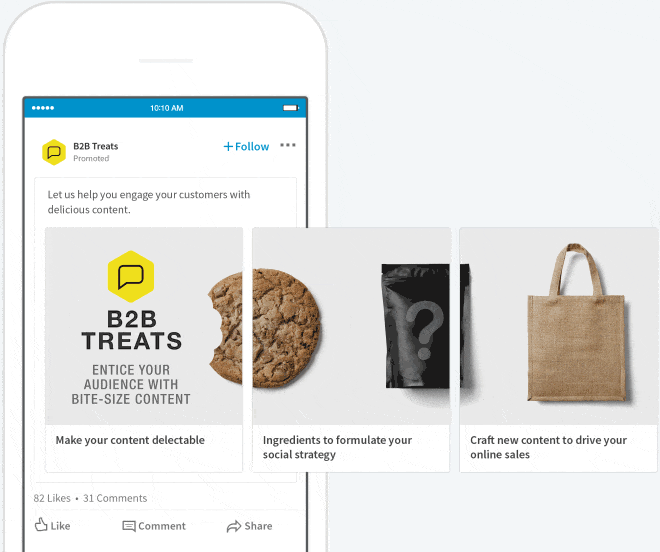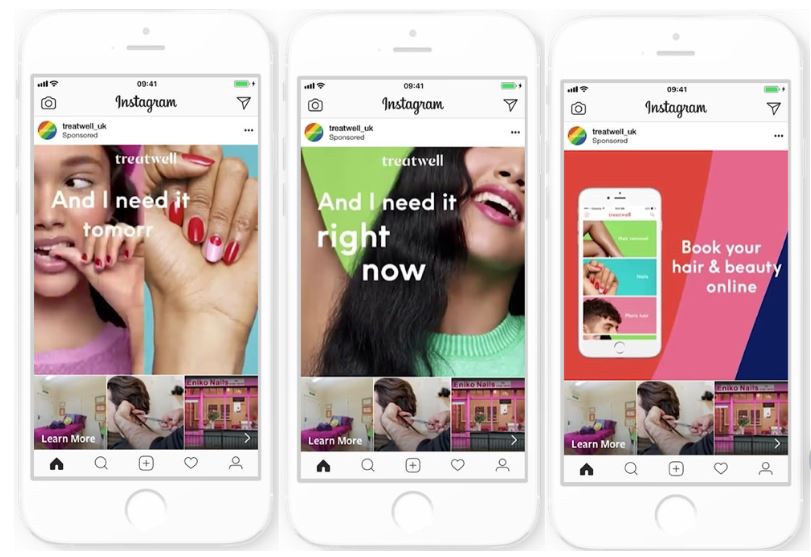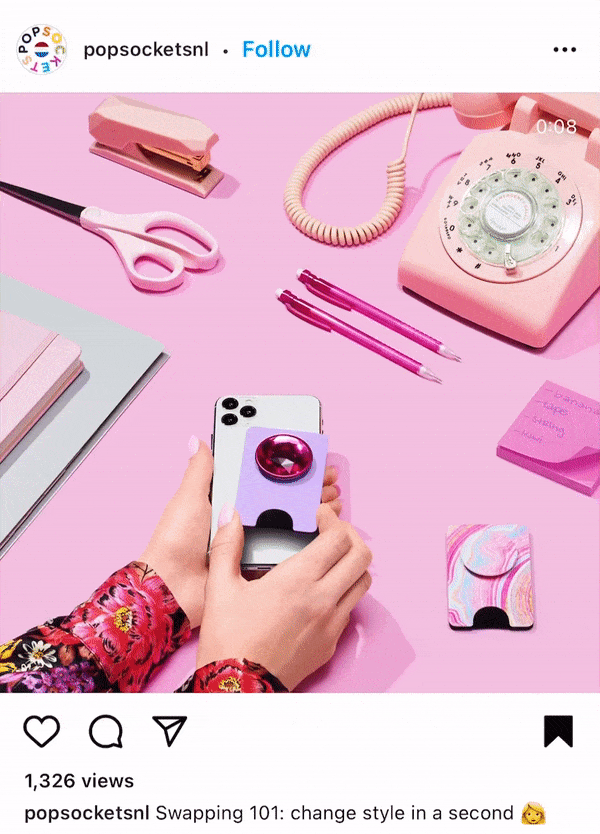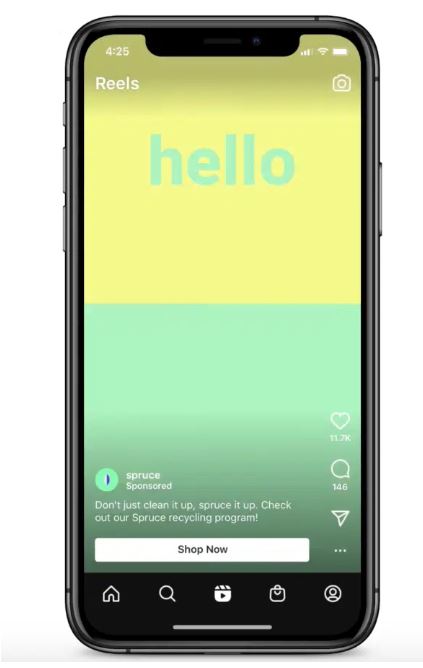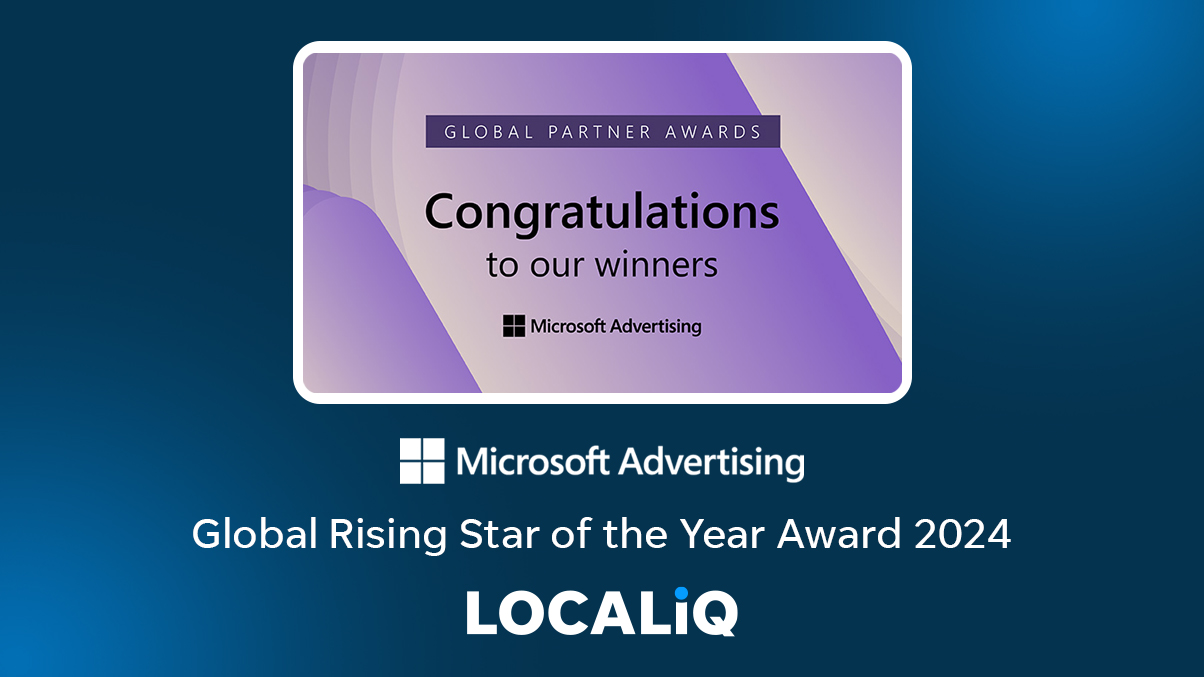Instagram has rapidly grown in popularity as a social networking tool over the past few years. Now that it has more than 1.3 billion active users, businesses are beginning to take note. Instagram provides businesses with an opportunity to use visual content to connect with their target market. To stay connected to their audience, businesses can utilise a variety of Instagram formats. Image ads, stories ads, and video ads are some of these formats, and each format has particular advantages. Which format will be the most effective for your business?
In this blog we will discuss this along with the following:
- What are Instagram ads?
- How do Instagram ads work?
- How much do Instagram ads cost?
- What determines Instagram ad costs?
- The different types of Instagram ads
- Choosing the right Instagram ad format
Social Media Account Audit Template
Audit and optimise all of your social accounts with our free, downloadable template.
What are Instagram ads?
Instagram ads are a way that businesses can reach their target audience by paying for their advert to be shown to users that meet their targeting criteria. Similar to Facebook, Instagram display ads are shown to users in feeds, between stories, and in other areas of the app. They have a similar appearance to regular posts, but they are always marked as sponsored to make that distinction clear. Additionally, they frequently include elements that a standard post doesn’t have, including links, call-to-action (CTA) buttons and product catalogues.
How do Instagram ads work?
Instagram advertising is directed at users who are most likely to be interested in the goods or services you are offering. Instagram ads are displayed to users based on their demographic information and interests, you can set the targeting to suit your business needs. There are two signs that the content is sponsored. The phrase sponsored appearing under the business name is the first indication. The CTA that can be seen at the bottom of the image is the second indication. Depending on your campaign’s goals, Instagram ads can include up to 18 different call-to-action buttons, and a link to your website, and can also offer visitors the chance to download apps or shop online. You don’t even need an Instagram account to run ads there. All you need is a Facebook Business Page because Facebook is its parent company. You can use Facebook Ad Manager to create campaigns and ad sets, where you can choose your budget, target market, ad placements, and optimisation settings for Instagram ads.
How much do Instagram ads cost?
The cost of an Instagram ad fluctuates, but theoretically, you could advertise on the platform for as little as £1 per day. However, given that the typical Instagram ad costs between £0.80 and £1.10 per click, this won’t be financially advantageous. Therefore, your daily ad budget would be used up with just one click. Depending on how competitive the market is where your business operates, the cost can climb, sometimes reaching £2.70 per click. This is a result of increased brand competition for interaction on social media, which raises the price of advertisements.
What determines Instagram ad costs?
Like other platforms, the cost of Instagram ads depends on a variety of factors. These include:
Campaign goals
Every successful digital marketing strategy will include goals. Whether you’re targeting people at the top or the bottom of the audience funnel, this will affect how much your Instagram advertising costs overall. For instance, a campaign goal focusing on brand awareness is likely far less expensive than one focusing on conversions.
Audience size
Because there is less competition for a certain demographic, costs will often be lower if you are targeting a larger audience. However, the more narrowly targeted your ads are (by limiting the age range or location, for example), the more expensive and competitive the ad space will be.
Ad relevance diagnostics
You may determine whether the ads you ran were pertinent to the audience reached using ad relevance diagnostics. Ad relevance diagnostics can help you figure out whether changing your creative assets, the post-click experience, or audience targeting could enhance performance if your ads aren’t achieving your advertising goals.
You can find out more here about ad relevance diagnostics.
Competition
The cost of your Instagram advertisements will always be impacted by competition. There will always be rivals trying to reach the same demographic as you when you try to reach out to them. The price of your Instagram advertising campaign may alter due to your competitors.
There are a couple of additional factors as well:
- Events and holidays: Holiday competition, particularly around Christmas, is very fierce. More businesses are competing for desirable leads, which raises the cost per click (CPC). You must plan your budget for your ad by taking into account holidays and activities that will be taking place during that time.
- Day of the week: Instagram users are more active throughout the week than during the weekend. This means you should plan to pay more for running an ad on a Tuesday compared to a Sunday.
- Target Demographic: The cost of your Instagram ad depends on the market you’re trying to attract. Because Instagram has fewer businesses than users, it is more expensive for B2B businesses to run advertisements. Some industries, such as clothes, are more expensive due to intense competition.
The different types of Instagram ads
It’s simple to believe that Instagram ads only come in two types: image ads and video ads. But that’s not the case. Although Instagram is an effective marketing tool, getting started can be challenging. Therefore, it’s best to first comprehend the available ad types on the platform before starting any marketing with Instagram. Instagram’s ad formats can be divided into two categories: format-based and section-based. Section-based ads are those that are sent to your audience through specific sections of the Instagram site, whereas format-based ads distribute their content in a predefined manner.
Format-based Instagram ads
The format-based types are often content that falls inside the standard Instagram feed and is categorised based on its format (which is their section). Of course, they may exist in other parts, but the list below demonstrates how they mostly differ in terms of how they are presented.
Image and photo ads
Although Instagram has seen many modifications and adjustments over the years, it initially began as a relatively simple photo and location-sharing platform. As a result, it’s not surprising that the most fundamental Instagram ad is the photo ad, which is a single-image Instagram advertisement.
Campaigns with strong visual information that can be encapsulated in a single image are best suited for image advertisements. These images can be produced using excellent photography, design, or illustration. Text can also be added to images. For the greatest results, Instagram advises minimising overlay text as little as possible.
Ad format details
Text recommendations
- Primary text: 125 characters
Design recommendations
- Image type: JPG or PNG
- Resolution: At least 1080 x 1080 px
- Ratio: 9:16
Technical requirements
- Maximum file size: 30MB
- Minimum width: 500 pixels
- Aspect ratio: 1%
Carousel ads
Users can swipe through a collection of pictures and videos in carousel advertisements. With a call-to-action button or a swipe-up link that takes viewers straight to your website, they can show up both in the feed and within Instagram Stories.
Carousel ads are useful for:
- Display a group of related products.
- An extended narrative.
- Share up to ten pictures or videos.
Ad format details
Text recommendations
- Primary text: 125 characters
- Maximum number of hashtags: 30
- Landing page URL: Required
Design Recommendations
- Image type: JPG or PNG
- Video file type: MP4, MOV or GIF
- Resolution: At least 1080 x 1080 px
- Ratio: 1:1
Technical Requirements
- Number of carousel cards: 2 to 10
- Image maximum file size: 30MB
- Video maximum file size: 4GB
- Video duration: 1 second to 2 minutes
- Aspect ratio: 1%
Collection ads
Collection advertising is a hybrid of shopping and carousel ads. Advertisements for collections show off items straight from your product catalogue. It is useful when you want to let your audience view several photos at once since it displays all of the images that are present in the advertisement in one view. A Collection Ad would give customers an overview of your listings with just one glance, for instance, if you own a real estate agency and have a few listings you want to display them.
Ad format details
Text recommendations
- Primary text: 125 characters
- Headline: 40 characters
- Landing page URL: Required
Design recommendations
- Image type: JPG or PNG
- Video file type: MP4, MOV or GIF
- Resolution: At least 1080 x 1080 px
- Ratio: 1.91:1 to 1:1
Technical requirements
- Instant experience: Required
- Image maximum file size: 30MB
- Video maximum file size: 4GB
- Minimum image/video width and height: 500 pixels each
Video ads
Because you can be creative with how you deliver your content, these video ads, as their name suggests, are a terrific method to attract attention. You may upload videos to the Instagram platform that are up to 60 seconds long, which is more than enough time to present your product or service to your target audience.
Ad format details
Text recommendations
- Primary text: 125 characters
- Maximum number of hashtags: 30
Design recommendations
- Video file type: MP4, MOV or GIF
- Ratio: 4:5
- Resolution: At least 1080 x 1080 px
- Video captions: Recommended but optional
- Video sound: Recommended but optional
Technical requirements
- Video duration: 1 second to 60 minutes
- Maximum file size: 250MB
- Minimum width: 500 pixels
- Aspect ratio: 1%
Shopping ads
With 130 million monthly shoppers, it’s no surprise that Instagram has been making significant improvements to its e-commerce offerings over the past two to three years. You may advertise and sell goods and services on the Instagram platform with Instagram Shopping Ads. When a customer clicks on one of these ads, they are taken directly to the product page on your website via a product tag that is included in the ad or image.
For e-commerce businesses looking to boost their sales by marketing their products on Instagram, this kind of advertisement is ideal. In addition to being able to view your products, shoppers will be able to buy them straight from the Instagram app. You must first set up your product catalogue before you can use this.
These are essentially just image or video ads that can be purchased because you’ve added product tags to them.
Section-based Instagram ads
Now that you are familiar with the ad formats, we can go on to learn about section-based advertising. These are all of the sections where your advert can appear.
Stories ads
The Instagram Stories feature was introduced in 2016 and the popularity of the feature cannot be disputed. Instagram’s Stories section includes advertisements (photos or videos) that are labelled as Stories Ads. Stories advertising can be optimised to meet the business goal that matters to you, can run for as long as you like, and can display multiple images or videos in a carousel arrangement. The best part about Instagram Stories is the fact they’re shown in between organic story posts, there is no need to defeat the algorithm!
Tip: Maximise the first three seconds of your Instagram Story as these are the most powerful stories!
That may seem quick but give it some time; you’ll have plenty of opportunity to get to the point. Viewers will have a reason to continue watching your Story or, even better, swipe up on your ad to discover more if you have consistent, branded visuals with your unique selling proposition right up front.
For example:
The name and brand promise are both obvious in this advertisement from Matt & Natt, the offer is prominent, and there is a straightforward call to action.
Explore ads
A brand-new feature of Instagram is the Explore section, where adverts that are specifically tailored to each user’s interests can be found. Simply put, clients who already share your target demographic’s interests will see your material if you configure your adverts to appear in the explore area.
The videos that you might like and similar posts sections of the Explore page invite users to view other content that is not in their network but that they may find interesting based on past behaviour. You can only utilise image and video ads as the ad types here.
Feed ads
The most well-known ad section is the feed ads. Users may be unaware that it is an advertisement until they see the word sponsored because these ads often appear naturally within the organic feed. The Instagram ad’s most fundamental section is this one. 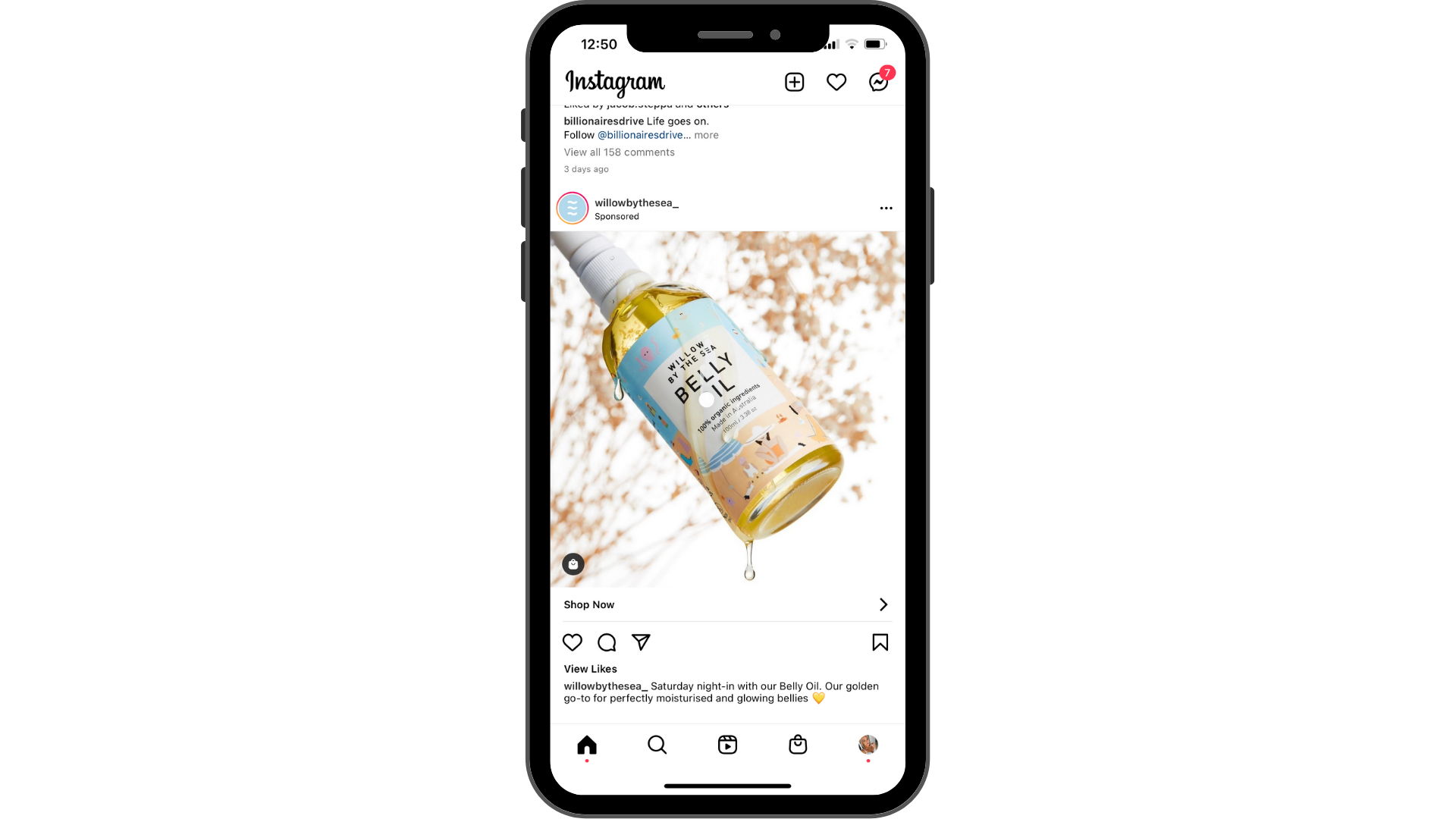 Image Source
Image Source
All ad formats, including images, videos, carousels, collections, and shopping ads, are available here.
Reels ads
Instagram recently announced that Reels would now support advertising following the successful debut. Ads are displayed between Reels and can last up to 30 seconds. They have similar specifications to Stories ads (full-screen vertical movies). To blend in effectively with organic Reels, they should have sound or music.
This section only allows for the usage of video ads.
Choosing the right Instagram ad format
It can be difficult to decide which of the numerous ad types to utilise for your campaign. The good news is that Ads Manager is ideally suited for testing, so you can try out various formats to see which one performs the best before launching a full campaign.
Run ads in various formats
Actually, you can give them all a try and let the outcomes speak for themselves. Run short-term campaigns for each ad format to start. You can usually tell what works after seeing a few days’ worth of ads. You can run advertising for five to seven days before analysing the results if you are aware that certain times of the week are when your company performs best. But it’s clear that taking this approach is expensive.
Run ad formats using organic data
If money is tight, you should base your decision on the past. For instance, if you already have an Instagram page and have previously shared photographs or videos, have a look at the formats that received the most engagement from your followers. Start your organic outreach right away if you don’t have adequate data. So that you have enough data to work with ultimately, start posting content frequently.
View competitor’s ads
Businesses must now display the ads they are running and where they are running them; this option is immediately accessible in all social media ad formats. Simply go to the company page and search for the part devoted to the company’s advertisements. You might study what your rivals are doing and incorporate their tactics into your own. If you don’t want to waste a lot of money running campaigns across numerous advertising or if you don’t want to spend a lot of time developing organic data, this is a fantastic place to start.
You can also utilise these questions as a guide to help you limit the formats further.
1. What is the aim?
Determine the most crucial result for your Instagram ad campaign while keeping in mind your social media marketing approach. Would you want to:
- Entice visitors to your website?
- Obtain views for a new product’s video?
- Amplify a new company’s brand awareness?
- Drive email signups, app downloads, or e-commerce purchases?
You can select a few different formats depending on the supported objectives for each ad type after you’ve defined your goal. Advertisements on stories and Reels, for instance, are better at promoting video views than ads on shopping and collection, which are better at promoting e-commerce transactions.
2. Who is my intended market?
Some ad formats may be more effective than others on Instagram, depending on the audience you want to reach. Think about the behaviours and tendencies of your audience. Do they enjoy binge-watching videos? Do they frequently shop online? Do people spend more time browsing through their feeds or viewing stories and Reels? Select ad formats with goals and calls to action that aligns with the inclinations of your target demographic.
3. What organically has performed the best?
There’s a good chance that the demographic you’ll be targeting with your Instagram advertisements share many characteristics with your organic followers. You may get a decent idea of what paid formats might be popular with your audience by looking at the content that has worked well in your organic feed and replicating that in your campaign.
You should now have a better understanding of Instagram ad formats, but If you’re still unsure which ad formats are right for your business then get in touch with one of our experts. You can also subscribe to our newsletter for more up-to-date marketing news!
Social Media Account Audit Template
Audit and optimise all of your social accounts with our free, downloadable template.



